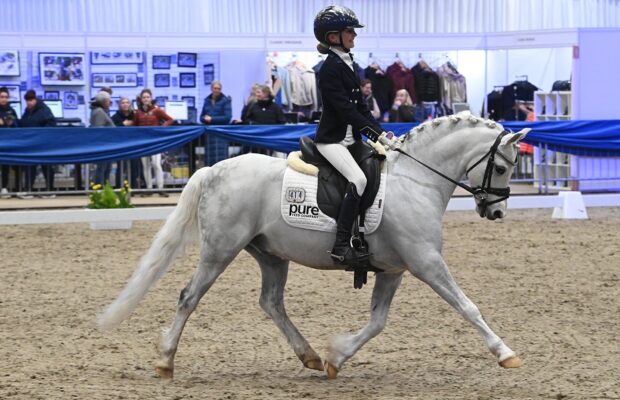Dressage rider Alice Oppenheimer explains how to keep a horse energetic and forward, even when slowing down
Alice rides and trains the successful Headmore horses bred at her family’s stud. She was a member of the 2009 young rider European Championships team, has trained four horses to grand prix and ridden internationally at grand prix level.
Training the stars
During a test, Headmore Davina (pictured, who is currently winning at prix st georges and inter I) used to back off and consequently get behind my leg at the first halt. Now, however, I almost have her too sharp in the warm-up so that, when she goes into the ring, she’s still forward enough even if she does back off a little.
Both rider and horse must think forward when making a downward transition. Keeping impulsion is a vital part of schooling a young horse as it teaches him to bring his hindlegs under himself and lift his shoulders. This will help with balance and is necessary preparation when teaching and training collection.
If you have a horse who tends to slow down before the transition — or even slams on the brakes — try these exercises…
Tackling the issue
1. If your horse anticipates a downward transition as soon as you go from rising trot to sitting, do the preparation but don’t ask for the transition. Instead, activate him and send him forward. Make sure he maintains the impulsion, then ask for walk. You can do the same exercise from canter to trot and canter to walk. This teaches the horse to listen to what you are actually asking for, rather than making the decision for himself.
2. When teaching a young horse the trot-to-walk transition, let him jog for a few steps in the transition. This teaches him to bring his hindquarters underneath him and produce a more forward transition. Gradually reduce the number of jog steps until you don’t need them any more and the transitions are balanced and forward.
3. Ride canter-to-trot transitions on a circle. While asking for the transition, use your inside leg to push him forward and a little sideways. This makes sure you keep your leg on in the transition, so you still ride forwards even though you are going down a gear.
Article continues below…
You might also be interested in:

#SundaySchool: perfecting pirouettes with Rebecca Hughes
The international dressage rider and young horse producer explains how walk pirouettes can improve engagement for medium trot

#SundaySchool: ultimate suppleness and engagement with a top dressage rider
Sarah Millis (pictured), an international dressage rider, explains how you can improve the quality and rhythm of the trot by

Subscribe to Horse & Hound magazine today – and enjoy unlimited website access all year round
Consider this…
- When training, abide by the ethos that every transition must be a good one.
- Ensure you are using your seat to push forward in the transitions rather than pulling back on the reins.
- Ride with enough leg to keep the forward momentum going, even into the halt.
- A dropping poll is a sign that your horse’s hindleg is not coming under enough.
For all the latest news analysis, competition reports, interviews, features and much more, don’t miss Horse & Hound magazine, on sale every Thursday.



